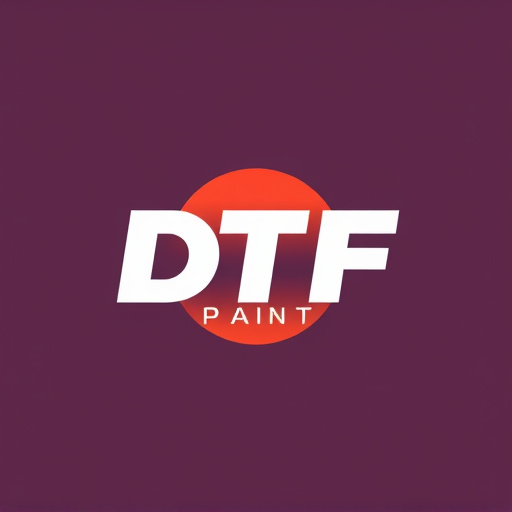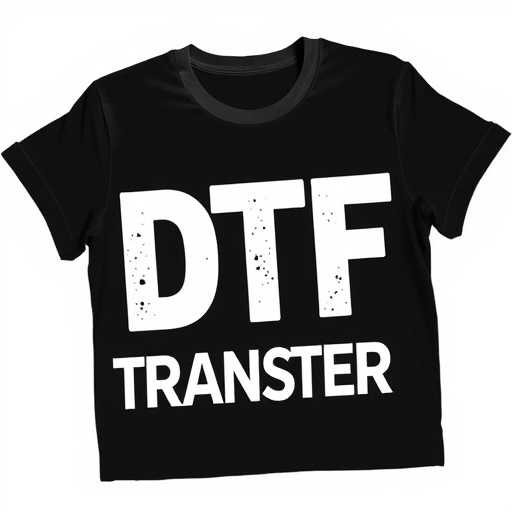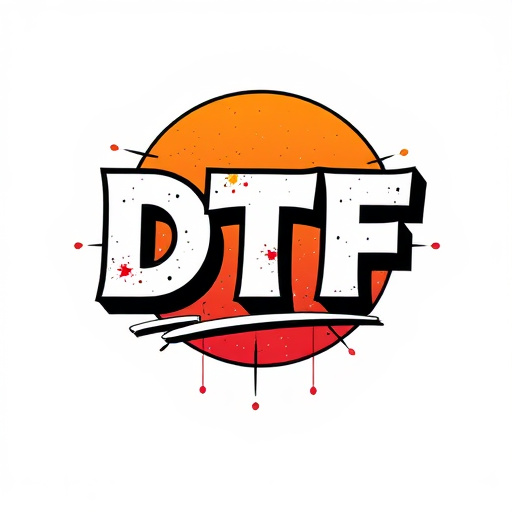Direct to Film (DTF) transfers revolutionize printing with their ability to precisely reproduce intricate details and thin lines on various materials. DTF technology offers high-resolution prints, vibrant colors, and superior adhesion, making it ideal for sectors like fashion, signage, and decorative arts where fine detail is crucial. Choosing the right DTF transfer films and utilizing specialized techniques ensure sharp, consistent prints, transforming industries with their exceptional aesthetic appeal and precision.
In the realm of printing, DTF (Direct to Film) transfers have emerged as a game-changer, offering unparalleled precision in reproducing intricate details. This article delves into the intricacies of DTF transfers, highlighting their ability to accurately capture thin lines and subtle nuances. We’ll explore key features, the importance of line reproduction, suitable materials, and techniques for optimal DTF prints. Additionally, real-world applications will demonstrate the versatility and impact of this cutting-edge technology in various industries.
- Understanding DTF Transfers: A Brief Overview
- The Importance of Accurate Line Reproduction
- Key Features of DTF (Direct to Film) Transfers
- Choosing the Right Materials for Optimal Prints
- Techniques to Achieve High-Quality Detail in DTF Printing
- Real-World Applications and Case Studies
Understanding DTF Transfers: A Brief Overview

Understanding DTF Transfers is key to achieving precise prints with intricate details. DTF (Direct to Film) Transfer technology allows for the direct application of designs onto various materials, particularly suitable for creating fine lines and delicate patterns. This process involves transferring a film containing the design onto a substrate, often a fabric or vinyl sheet, through heat and pressure.
DTF Printing offers an advantage over traditional methods by enabling high-resolution prints with consistent line quality. The film acts as a mask, allowing precise control over ink application, resulting in sharp lines and fine details. This technology is widely used for custom apparel design, signage, and decorative arts, ensuring that intricate patterns and logos are accurately reproduced across a range of materials.
The Importance of Accurate Line Reproduction

In the realm of printing and design, achieving precise line reproduction is paramount, especially when creating intricate graphics or fine art. This is where DTF (Direct to Film) transfers shine as a game-changer in the industry. By employing advanced techniques, DTF Printing ensures that every thin line and delicate detail is accurately represented on various media, from fabrics to metals. The process involves exposing film to precisely control ink transfer, resulting in crisp, clean lines that bring designs to life with remarkable fidelity.
Accurate line reproduction is crucial for maintaining the artistic integrity of a design. Whether it’s a complex pattern or a delicate illustration, each line should be rendered with precision to convey the intended message and aesthetic appeal. DTF Transfers offer a level of detail and clarity that is particularly valuable in fields like fashion, signage, and decorative arts, where minute variations can significantly impact the final product.
Key Features of DTF (Direct to Film) Transfers

Direct to Film (DTF) transfers have revolutionized the way fine details and thin lines are captured and reproduced in printing. This cutting-edge technology offers a range of key features that set it apart from traditional methods, ensuring exceptional accuracy and precision. One of the primary advantages is its ability to produce high-resolution prints directly onto film, eliminating the need for intermediate plates. This direct approach results in sharper lines and more intricate details, making DTF ideal for creating detailed artwork, logos, and patterns.
Additionally, DTF transfers provide a vast color gamut, allowing for vibrant and accurate representations of even the most complex designs. The process involves exposing the film to light through a digital mask, ensuring every shade and tint is precisely captured. This level of detail and color accuracy is particularly beneficial for industries like fashion, jewelry design, and signage, where minute variations in line work and color can significantly impact the final product’s aesthetic appeal.
Choosing the Right Materials for Optimal Prints

When it comes to creating prints with thin lines and intricate details, selecting the suitable materials is paramount. For DTF (Direct to Fabric) transfers, the choice of media plays a significant role in achieving crisp and accurate results. High-quality DTF films designed for detailed printing offer exceptional resolution, ensuring that even the finest line weights are reproduced accurately on various fabric types. These specialized films are engineered to provide excellent adhesion, color vibrancy, and overall print durability.
Using the right DTF film, whether it’s for textile or surface printing, allows printers to produce DTF prints with consistent quality. The material’s opacity and ink compatibility ensure that colors remain vibrant and lines remain sharp, even in complex designs. By choosing a DTF transfer tailored for detailed work, artists and designers can unlock their creativity, offering clients stunning, realistic prints with every order.
Techniques to Achieve High-Quality Detail in DTF Printing

Achieving high-quality detail in DTF (Direct to Film) printing involves a combination of precise techniques and careful material selection. One crucial method is utilizing fine, precise print heads that can deposit ink with minimal droplet size, ensuring thin lines are accurately reproduced. The use of high-resolution screens or digital plates allows for intricate details to be captured with clarity, making it ideal for complex designs.
Additionally, the choice of compatible inks plays a significant role. Specialized DTF inks formulated for fine detail work offer superior control and precision, enabling the creation of delicate lines and text as small as 0.1mm in width. Precise printing techniques, such as using masks or templates to guide the print head, further enhance accuracy. This meticulous approach guarantees that DTF prints maintain their sharpness and clarity, even when featuring intricate patterns and fine lines.
Real-World Applications and Case Studies

In various industries, the ability to produce high-fidelity thin lines and intricate details is paramount for achieving professional outcomes. DTF (Direct to Film) Transfer technology has emerged as a game-changer in this regard, offering precise and accurate results across diverse real-world applications. From graphic design and signmaking to textile printing and jewelry manufacturing, DTF Printing has proven its versatility.
Case studies demonstrate the exceptional capabilities of DTF Transfers in reproducing fine lines as thin as 0.1 mm, ensuring every detail is captured flawlessly. For example, in the production of nameplates and badges, DTF Prints have consistently delivered crisp, clean lines that meet the stringent requirements of industrial and commercial sectors. Similarly, in textile printing, these transfers enable the creation of intricate patterns and designs with remarkable clarity, elevating the visual appeal and overall quality of garments and fabrics.














